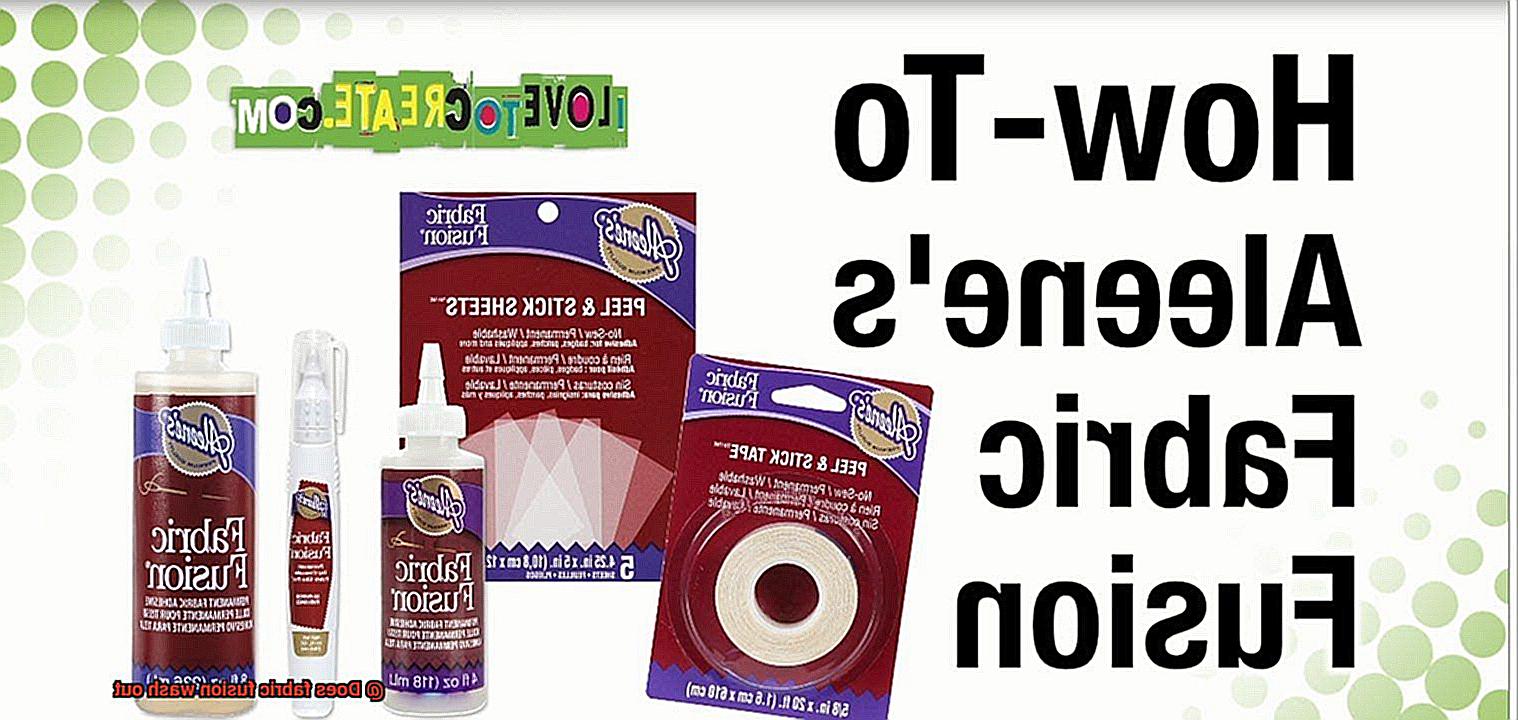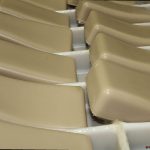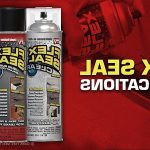Are you tired of your favorite clothes falling apart after just a few washes?
Or are you constantly fixing buttons and reattaching hems? Well, there might be a solution that can save you from these sewing nightmares: fabric fusion.
But the big question is, does fabric fusion wash out? In this blog post, we’ll dig deep into this topic and uncover whether fabric fusion lives up to its promises of lasting strength.
So, let’s get down to business and find out if fabric fusion can truly withstand the test of time.
What is Fabric Fusion?
Contents
- 1 What is Fabric Fusion?
- 2 Does Fabric Fusion Wash Out?
- 3 Factors Affecting the Durability of the Bond
- 4 Washing Instructions for Fabric Fusion Adhesive
- 5 Testing an Area Before Applying Fabric Fusion
- 6 Avoiding Harsh Chemicals and Bleach
- 7 Heat and Prolonged Exposure to Water
- 8 Care Instructions for Both the Adhesive and the Fabric
- 9 Conclusion
Prepare to be amazed by the wonders of fabric fusion. In this comprehensive guide, we will delve into the world of fabric fusion, exploring its versatility, durability, and the endless possibilities it offers for creating stunning fabric projects. So, grab your glue sticks and get ready to embark on a journey of creativity.
Fabric fusion is a magical adhesive specially formulated for fabrics. Whether you’re working with cotton, denim, silk, or any other fabric, fabric fusion is designed to bond them together securely and permanently without the need for sewing. Available in various forms such as liquid, tape, and glue sticks, it is incredibly versatile and adapts to the unique demands of different projects.
Key Features of Fabric Fusion:
- Washability: One of the most remarkable features of fabric fusion is its ability to withstand washing and drying without losing its adhesive properties. Unlike traditional fabric glues that may wash out or weaken after being laundered, fabric fusion creates a bond that can endure countless cycles, ensuring your creations remain intact.
- Durability: Fabric fusion goes beyond merely sticking fabrics together—it forms an unbreakable connection that stands the test of time. Whether you’re hemming pants, repairing tears in clothing, or attaching patches and embellishments, fabric fusion ensures your projects maintain their integrity even in the face of daily wear and tear.
- Clear and Flexible Finish: When dry, fabric fusion becomes virtually invisible on the fabric surface, leaving no unsightly residue behind. This provides a professional and seamless finish to your creations. Moreover, unlike other adhesives that stiffen fabrics, fabric fusion retains the natural drape and movement of the fabric even after drying.
Tips for Using Fabric Fusion:
- Carefully read and follow the manufacturer’s instructions to ensure proper application and drying times.
- Conduct a compatibility test on a small, inconspicuous area of the fabric before committing to a larger project.
- Refrain from using harsh chemicals or bleach when washing fabrics bonded with fabric fusion to preserve the bond’s longevity.
- Adhere to the care instructions provided for both the adhesive and the fabric to maintain the durability of your creations.
Does Fabric Fusion Wash Out?
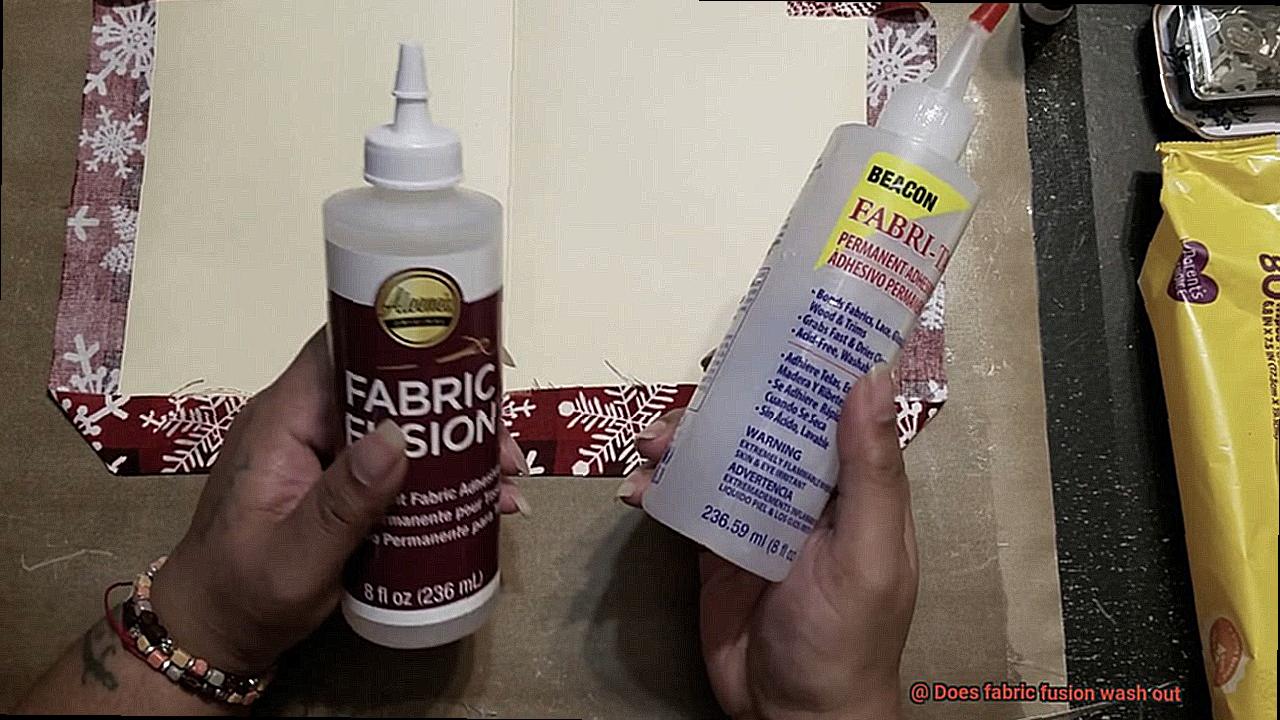
Fabric fusion has become a go-to adhesive for fabric-based projects, but one question that often arises is whether or not it washes out. After all, we want our creations to withstand the test of time and multiple trips through the washing machine. So, let’s dive in and explore the washability of fabric fusion.
First things first, fabric fusion is designed to be permanent. It is specifically formulated to bond fabric together and withstand the rigors of everyday use. However, it’s always a good idea to check the specific product label for any washing instructions or precautions. Some fabric fusion products may require a certain curing time before they become fully permanent and washable. So, be sure to follow the manufacturer’s recommendations for the best results.
It’s important to note that not all fabric fusion products are created equal. Some may have better washability than others. If you’re unsure about a particular product, it’s always a good idea to do a small test on a scrap piece of fabric before using it on your actual project.
When it comes time to wash your fabric items bonded with fabric fusion, it’s generally recommended to follow the care instructions provided by the manufacturer. This may include using a gentle cycle, washing in cold water, or even hand-washing if necessary. By following these guidelines, you can help preserve the bond between fabrics and ensure the longevity of your projects.
However, over time or with repeated washing, fabric fusion may start to deteriorate. Factors such as the quality of the adhesive, the type of fabric being bonded, and the washing conditions can all contribute to this. If you find that fabric fusion is starting to wash out or lose its bond, don’t fret. You can always reapply the adhesive or explore other alternatives such as sewing or trying a different type of fabric glue.
Factors Affecting the Durability of the Bond
In this blog post, we will delve into the six key factors that impact the durability of a bond created using fabric fusion.
First and foremost, let’s talk about the type of fabric. Not all fabrics are created equal when it comes to bonding. Fabrics with smooth and tightly woven textures, like cotton or polyester, form stronger bonds compared to fabrics with rough or loose weaves, such as silk or chiffon. The texture and composition of the fabric play a vital role in how well the adhesive can penetrate and adhere to the fibers.
Next, let’s discuss the quality of the adhesive. Using a high-quality adhesive specifically designed for fabric bonding is crucial for achieving a durable bond. Look for adhesives that are formulated for fabric fusion and can withstand repeated washes and exposure to various conditions. Don’t settle for subpar adhesives that will leave you disappointed.
Now, let’s move on to application technique. Properly applying the adhesive is essential for a strong bond. Follow the manufacturer’s instructions carefully and apply the adhesive evenly and in the recommended quantity. Applying too little adhesive may result in a weak bond, while using too much can lead to stiffness or visible residue on the fabric. Achieving a balance is key.
Surface preparation is also vital in achieving maximum bond strength. Ensure that both surfaces being bonded are clean and free from any dirt, oil, or other contaminants. Washing and drying the fabric beforehand can help remove any residual chemicals or finishes that could interfere with adhesion. A clean surface sets the stage for success.
Some fabric fusion adhesives require heat activation for optimal bonding strength. Heat-activated adhesives work by melting upon exposure to heat, allowing them to penetrate and bond with the fabric fibers more effectively. Applying heat using an iron or a heat press can enhance the durability of the bond. Heat brings out the best in your bond.
Last but certainly not least, follow the washing and care instructions provided by the adhesive manufacturer. These instructions are crucial for maintaining the durability of the bond. Some adhesives may require special care, such as gentle machine wash or handwashing. Ignoring these instructions or subjecting the bonded fabric to harsh washing conditions can weaken the bond over time. Take care of your bond, and it will take care of you.
By considering these factors, you can ensure that your fabric fusion bonds remain strong and durable even after multiple washes. However, it’s important to note that fabric fusion may not be as permanent or durable as sewing or other traditional methods of fabric joining. So, make sure to assess the specific needs of your project and select the appropriate bonding method accordingly.
Washing Instructions for Fabric Fusion Adhesive
Fabric Fusion Adhesive is a popular choice for bonding fabrics together, but proper care and maintenance are essential to ensure the longevity of your fabric projects. Here are the washing instructions you need to know:
- Cure Time: After applying the adhesive, allow it to cure for a minimum of 72 hours before washing. This ensures a strong bond between the adhesive and fabric.
- Washing Machine: Use a gentle cycle with cold water to wash your fabric project. Avoid hot water, as it can weaken the adhesive bond. Harsh detergents and bleach should also be avoided. Opt for gentle detergents that won’t harm the adhesive or fabric.
- Inside Out: Turn your fabric project inside out before placing it in the washing machine. This protects the adhesive from direct contact with other items in the wash, reducing the risk of damage or rubbing off.
- Mesh Laundry Bag: Consider using a mesh laundry bag for extra protection, especially for delicate fabrics or items with embellishments that may snag on other items in the wash.
- Air Dry: Instead of using a dryer, air dry your fabric project. High heat can weaken the adhesive bond, so hang or lay your project flat until it’s completely dry.
- Ironing: If ironing is necessary, iron on the reverse side of your fabric project or use a pressing cloth between the adhesive and the iron. This prevents direct heat from compromising the adhesive bond.
- Fabric Compatibility: Fabric Fusion Adhesive works best on cotton, denim, felt, and similar materials. It may not adhere as well to fabrics with a high synthetic content or those treated with water repellent finishes. Choose your fabrics wisely.
Testing an Area Before Applying Fabric Fusion
Fabric fusion, a popular adhesive for bonding fabric, is a versatile tool in crafting and sewing projects. However, to ensure a flawless outcome, it is essential to test the adhesive on a small area before diving into your project. This article will explore the significance of testing an area before applying fabric fusion, providing expert insights for achieving optimal results.
The Purpose of Testing:
Determine Performance and Compatibility:
- Different fabrics react differently to fabric fusion.
- Testing allows assessment of the adhesive’s bonding capability and durability on specific fabrics.
- Prevent potential damage or undesired outcomes on cherished fabrics.
The Testing Process:
Select an inconspicuous area:
- Choose a small, less visible spot on the fabric.
- Minimize potential damage or discoloration.
Apply and Dry:
- Use a small amount of fabric fusion adhesive on the chosen area.
- Firmly press it according to the manufacturer’s instructions.
- Allow complete drying before proceeding with the test.
Gently Pull Apart:
- Once dry, cautiously attempt to pull the fabric apart.
- A successful bond without fabric damage indicates suitability for that particular fabric.
Factors to Consider:
Sensitivity of Fabrics:
- Some fabrics are more sensitive and prone to damage.
- Testing identifies if the adhesive is too harsh for your fabric choice.
Washing Instructions and Durability:
- Evaluate how well the adhesive withstands washing cycles.
- Assess if it meets project durability requirements.
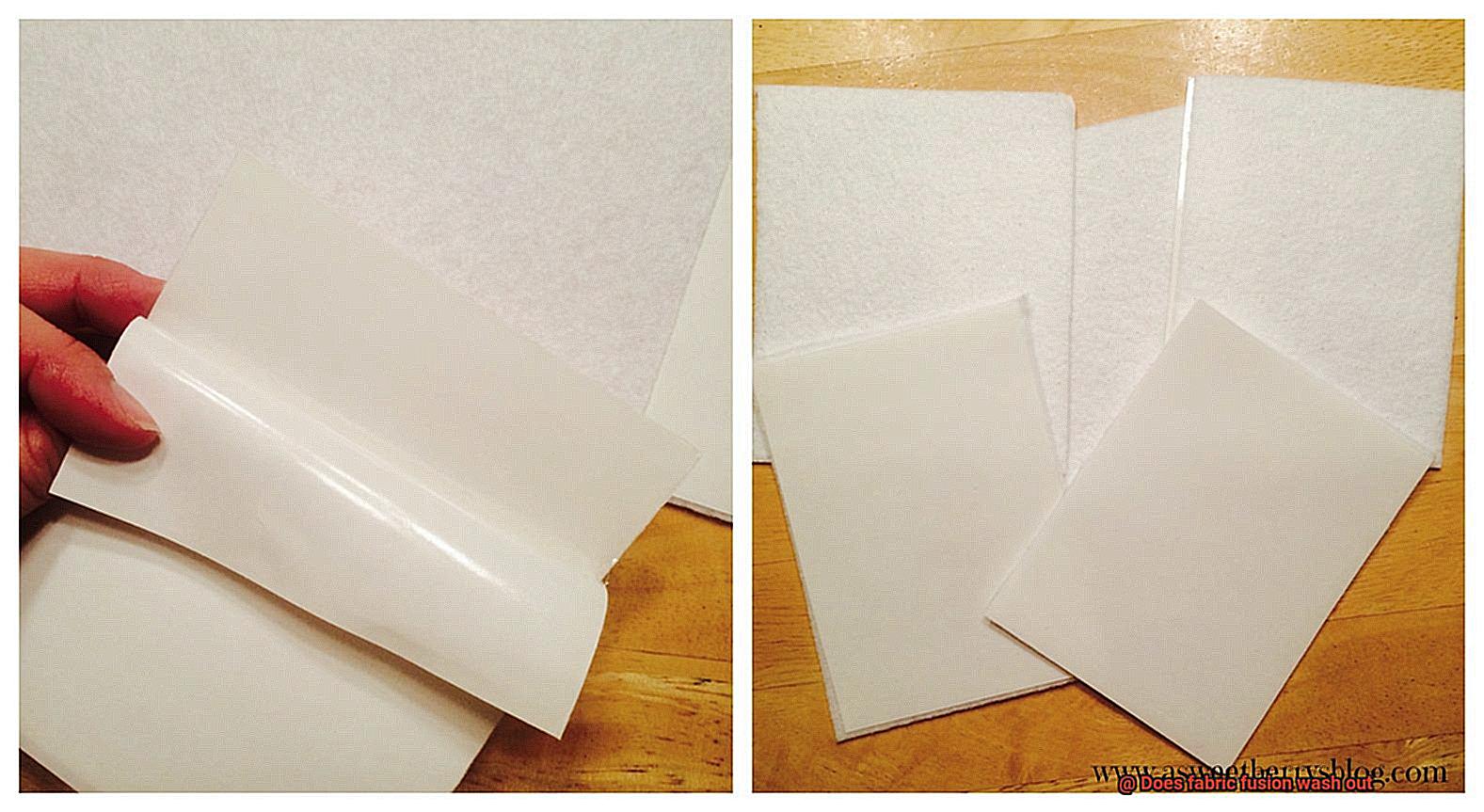
Avoiding Harsh Chemicals and Bleach
Fabric fusion is a remarkable technique for bonding fabrics together, whether you’re unleashing your creativity in crafting beautiful projects or mending your beloved clothing items. However, the key to preserving the longevity of fabric fusion creations lies in understanding how to properly wash and care for them. One vital aspect of this care is avoiding harsh chemicals and bleach, as they can cause significant damage to the bonds formed by fabric fusion.
Let’s begin by examining the impact of bleach on fabric fusion. While bleach is renowned for its stain-removing prowess, it can also weaken the adhesive bonds created by fabric fusion. The contact between bleach and the adhesive can lead to degradation or discoloration of the bond. To prevent this undesirable outcome, it is crucial to separate fabric fusion items from any laundry loads that include bleach. Consider either hand-washing these items separately or utilizing a gentle cycle on the washing machine without adding bleach.
Yet, bleach is not the sole culprit to be wary of. Strong detergents and cleaning agents containing solvents or abrasive ingredients can also erode the adhesive bonds in fabric fusion. To err on the side of caution, opt for mild detergents or specialized fabric cleaners specifically designed for delicate fabrics.
When it comes to washing fabric fusion items, several tips should be kept in mind. If you choose to hand-wash, employ lukewarm water and a gentle detergent tailored for delicate fabrics. Carefully agitate the item in the soapy water and rinse thoroughly with clean water. Avoid wringing or twisting the fabric, as these actions may cause damage to the fused areas.
For those who prefer machine-washing, consider using a mesh laundry bag to shield the bonded areas from excessive agitation. Select a gentle or delicate cycle and use cold or lukewarm water. It is vital to avoid high spin speeds or lengthy durations in the washing machine to minimize stress on the fabric fusion bonds.

Once your fabric fusion items are clean, it is paramount to resist the temptation of using a dryer. High heat can weaken the adhesive, causing the fabric to shrink or distort. Instead, opt for air drying by laying the items flat on a clean towel or hanging them up.
It is important to acknowledge that fabric fusion may not possess the same durability as traditional sewing methods, especially when exposed to frequent washing or harsh conditions. Therefore, it is imperative to adhere to proper care instructions and take necessary precautions to prolong the lifespan of fabric fusion creations.

Heat and Prolonged Exposure to Water
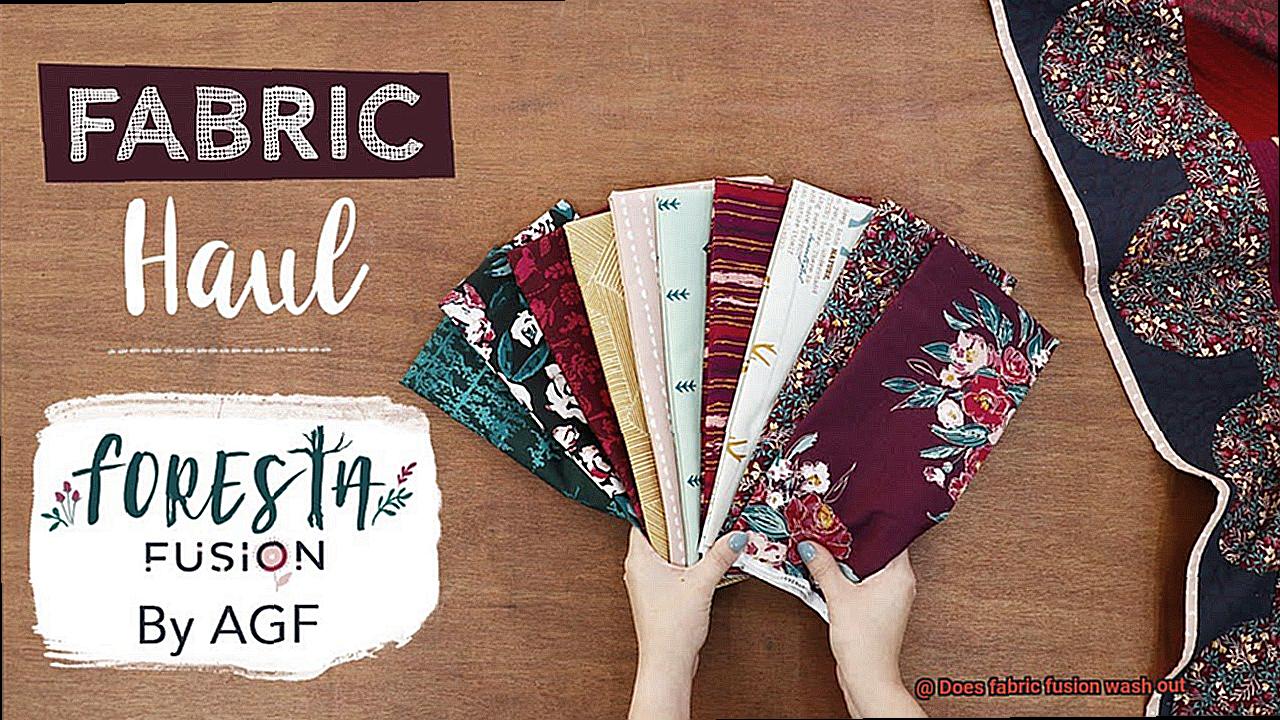
Fabric fusion is a remarkable technique that seamlessly bonds fabrics, creating stunning and long-lasting creations. However, understanding how heat and prolonged exposure to water can affect the durability of fabric fusion is crucial. In this blog post, we will delve into the effects of these factors on the bond between fabrics, while providing valuable tips for maintaining the longevity of your fused fabric.
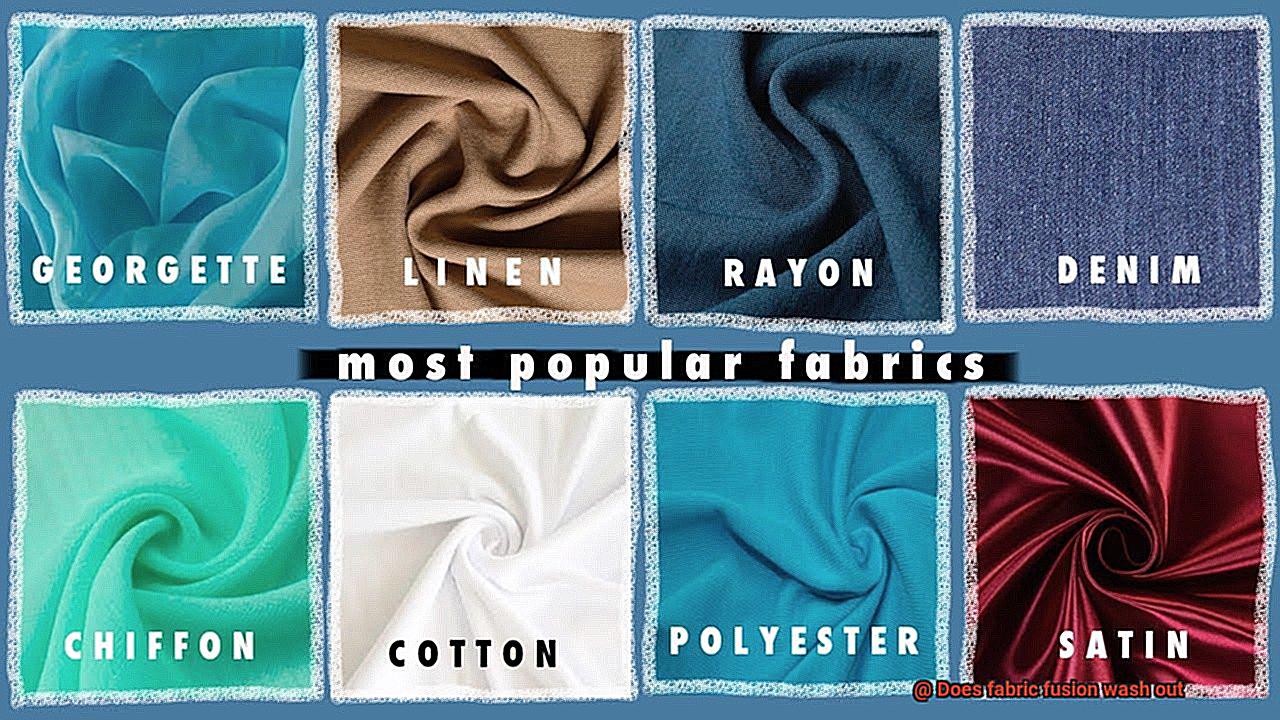
Heat: A Double-Edged Sword
High temperatures present a challenge for fabric fusion. When exposed to heat, the adhesive used in fabric fusion may melt or weaken, compromising the integrity of the bond. Delicate materials like silk or synthetic blends are particularly susceptible to heat damage, necessitating caution when working with these fabrics. To prevent issues, it’s essential to ensure that the temperature at which the fabric fusion was applied is compatible with the temperature it will encounter during use or washing.
Water: A Test for Durability
Prolonged exposure to water can also impact the durability of fabric fusion. Over time, water has the potential to weaken the adhesive, resulting in a breakdown of the bond between fabrics. Swimwear and outdoor gear, although often water-resistant or waterproof, are still vulnerable to the effects of extended water contact. For such applications, selecting an adhesive specifically designed to withstand water exposure becomes vital.
Choosing the Right Adhesive:
Not all fabric fusions are created equal. Some adhesives are formulated to better withstand heat and water exposure than others. Before embarking on a project involving heat or water exposure, carefully read and follow the instructions provided by the adhesive manufacturer. Seek adhesives specifically labeled as suitable for high temperatures or water resistance.
Proper Care for Longevity:
To ensure your fused fabric’s longevity, adhere to the manufacturer’s care instructions diligently. Gentle washing methods, including hand-washing or using a mesh laundry bag in the machine, can help maintain the bond between fabrics. Avoid harsh chemicals and bleach, as they can weaken the adhesive and compromise durability. After washing, air drying is recommended to prevent unnecessary stress on the fabric fusion.
Care Instructions for Both the Adhesive and the Fabric
Whether you’re a seasoned pro or just starting out, it’s important to understand the care instructions for both the adhesive and the fabric when using this fantastic technique. So, let’s dive in and explore how to keep your fabric fusion creations looking their best.
When it comes to the adhesive, the first rule of thumb is to always read and follow the manufacturer’s instructions. Different adhesives have different requirements, so pay attention to details like temperature limitations and recommended washing methods. For those permanent and durable adhesives, treat your fabric fusion creations just like any other garment – turn them inside out before washing to minimize wear and tear on the adhesive bond. This simple step can make a world of difference in preserving your creations.
Now, let’s talk about those delicate adhesives that require a little extra TLC. Handwashing with mild detergent and cold water is your best bet to keep those fabric fusion wonders intact. Harsh chemicals and bleach are a big no-no since they can weaken the adhesive over time. So be gentle when washing or handling these delicate items – they deserve a little extra love.
Next up, let’s focus on the fabric itself. Each fabric has its own care instructions, so it’s important to follow any specific recommendations from the manufacturer. And hey, don’t forget to test a small inconspicuous area before diving headfirst into any cleaning products or techniques. This simple step can help you avoid any potential disasters and ensure that your fabric stays looking its best.
When it comes time to wash your beloved fabric fusion creations, opt for a gentle cycle with cold water. This helps protect both the adhesive and the fabric from unnecessary stress. And please, avoid high heat settings when drying – excessive heat can melt or weaken that precious adhesive bond. Take a little extra time and care during the drying process to ensure that your creations come out looking fabulous.
Lastly, let’s talk storage. Hang or fold your fabric fusion masterpieces in a way that minimizes stress on the adhesive bond. Tight or prolonged folding can spell trouble for your creations, so take extra care when stowing them away. Show your fabric fusion creations the respect they deserve by giving them a proper place to rest.
mORL1jJSdlk” >
Conclusion
Fabric fusion is a popular method of adhering fabric together without the need for sewing.
But the burning question remains: does fabric fusion wash out? Well, fear not, because fabric fusion is designed to withstand the test of time and multiple trips through the washing machine.
It bonds fabric fibers together with a strong adhesive that holds up even in the face of water and detergent.

